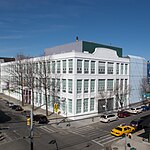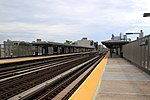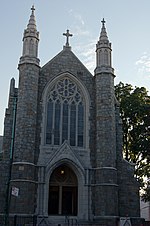Kaufman Astoria Studios
American film studiosAstoria, QueensBuildings and structures completed in 1920Buildings and structures in Queens, New YorkBuildings and structures on the National Register of Historic Places in New York City ... and 6 more
Entertainment companies based in New York CityHistoric American Buildings Survey in New York CityHistoric districts in Queens, New YorkNational Register of Historic Places in Queens, New YorkNew York City Designated Landmarks in Queens, New YorkTelevision studios in the United States

The Kaufman Astoria Studios is a film studio located in the Astoria section of the New York City borough of Queens. The studio was constructed for Famous Players-Lasky in 1920, since it was close to Manhattan's Broadway theater district. The property was taken over by real estate developer George S. Kaufman in 1982 and renamed Kaufman Astoria Studios. The studio is home to New York City's only backlot, which opened in December 2013. The property was designated a national historic district and added to the National Register of Historic Places in 1978.
Excerpt from the Wikipedia article Kaufman Astoria Studios (License: CC BY-SA 3.0, Authors, Images).Kaufman Astoria Studios
34th Avenue, New York Queens
Geographical coordinates (GPS) Address Nearby Places Show on map
Geographical coordinates (GPS)
| Latitude | Longitude |
|---|---|
| N 40.757705555556 ° | E -73.923825 ° |
Address
34th Avenue 35-02
11106 New York, Queens
New York, United States
Open on Google Maps








